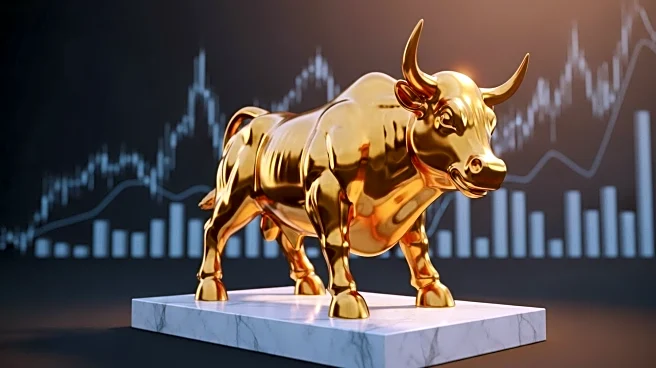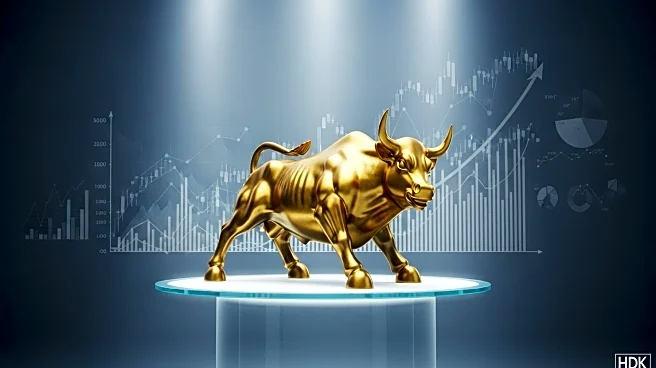What's Happening?
Gold prices have reached an all-time high, driven by expectations of a Federal Reserve interest rate cut and ongoing political gridlock in the U.S. Congress. The price of spot gold rose to $3,965.39 per ounce, with futures for December delivery climbing to $3,988.10. This surge is attributed to the market's anticipation of a 25 basis-point rate cut by the Federal Reserve in both October and December, with probabilities of 95% and 83% respectively, according to the CME FedWatch tool. The current political stalemate, which has resulted in a government shutdown, further supports gold's appeal as a safe-haven asset. Despite Kansas City Fed Bank President Jeff Schmid's caution against further rate cuts due to inflation concerns, market sentiment remains optimistic about the cuts.
Why It's Important?
The rise in gold prices underscores the market's reliance on Federal Reserve policy decisions, particularly in times of economic uncertainty. A rate cut typically lowers the opportunity cost of holding non-yielding assets like gold, making it more attractive to investors. The current situation reflects broader economic anxieties, including geopolitical tensions and a weaker dollar, which have driven a 51% increase in gold prices this year. This trend highlights the potential for significant shifts in investment strategies, as investors seek to hedge against economic instability. The ongoing government shutdown adds another layer of complexity, potentially affecting economic growth and policy decisions.
What's Next?
The Federal Reserve's upcoming meetings in October and December will be closely watched for any changes in interest rate policy. Should the Fed proceed with the anticipated rate cuts, it could further bolster gold prices and influence broader market dynamics. Additionally, the resolution of the congressional impasse and government shutdown will be critical in shaping economic forecasts and investor confidence. Stakeholders, including central banks and retail investors, will continue to monitor these developments closely, adjusting their strategies in response to policy shifts and economic indicators.
Beyond the Headlines
The current economic environment raises questions about the long-term implications of sustained low interest rates and their impact on inflation and economic growth. The Federal Reserve's balancing act between supporting the job market and controlling inflation will be pivotal in shaping future monetary policy. Moreover, the increased demand for gold-backed ETFs and central bank purchases reflect a growing trend towards diversification and risk management in investment portfolios. This shift could have lasting effects on global financial markets and the role of traditional safe-haven assets.










